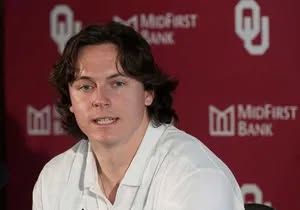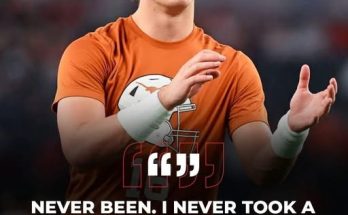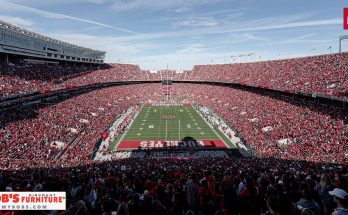Brent Venables’ decision to invest a staggering \$4.5 million in his coaching staff, particularly on assistants like Matt Mateer and Sam Arbuckle, has become one of the most scrutinized gambles in recent Oklahoma football history. The stakes couldn’t be higher, and for a program steeped in tradition and expectation, this financial maneuver has put the Sooners’ future on a knife’s edge.
Oklahoma football has long been synonymous with excellence, a breeding ground for NFL talent and a powerhouse in college football. The Sooners’ fanbase is passionate, their expectations lofty, and their patience notoriously thin when it comes to anything less than championships and playoff appearances. In this context, Venables’ \$4.5 million commitment to assistants raises critical questions about both his strategy and the long-term trajectory of the program.
Brent Venables, a coach with a celebrated defensive mind honed over years at Clemson, arrived in Norman amid tremendous optimism. The Sooners sought to restore their defensive identity, which had been a glaring weakness in recent seasons. Venables’ reputation was sterling; he was known for his aggressive schemes and ability to develop NFL-caliber defenders. However, the landscape of college football coaching is evolving rapidly, and with it, the financial demands of assembling a top-tier staff have ballooned. Venables’ decision to allocate such a substantial sum towards assistants signals a belief that a coaching staff’s quality can make or break the program’s renaissance.
Yet, the specific choices—primarily Matt Mateer and Sam Arbuckle—have ignited debate. Mateer, who was brought on to shore up the offensive line and bring fresh energy to a unit that had struggled with consistency, carries a heavy burden. Meanwhile, Arbuckle, responsible for tight ends and offensive nuances, is expected to unlock the offense’s potential and complement Venables’ defensive focus. Together, their combined compensation forms the heart of this \$4.5 million gamble.
At face value, investing heavily in assistants is not inherently misguided. Modern college football demands specialization and elite-level coaching across the board. Programs like Alabama, Georgia, and LSU have demonstrated the value of deep, well-compensated staffs that recruit effectively and maximize player development. However, in Oklahoma’s case, this approach assumes that Mateer and Arbuckle can perform at a level commensurate with their paychecks—and thus justify Venables’ gamble.
Unfortunately for Venables and the Sooners, the results have been uneven. The offensive line, despite Mateer’s presence, has shown flashes of improvement but remains inconsistent. Issues with protection, run blocking, and cohesion persist, undermining the offense’s rhythm. This inconsistency has translated into fewer sustained drives and more pressure on the defense. Arbuckle’s impact has been similarly mixed; the offense occasionally looks creative and dynamic but often sputters in critical moments, leaving fans frustrated and critics vocal.
The pressure on Venables to justify this financial outlay intensifies as the Sooners continue to face challenges both on and off the field. Oklahoma’s storied program is no stranger to coaching staff turnover, but the unprecedented investment in these particular assistants magnifies the spotlight. Should Mateer and Arbuckle fail to elevate the team’s performance to the expected level, questions will inevitably swirl around Venables’ judgment and ability to manage his staff.
Beyond pure performance, the \$4.5 million commitment affects Oklahoma’s financial landscape. Athletic departments, while flush with revenue from TV contracts and merchandising, must still balance budgets carefully. Spending heavily on assistants reduces flexibility in other areas such as recruiting budgets, facilities upgrades, and support staff. Venables’ gamble is thus a double-edged sword; if it succeeds, Oklahoma could regain dominance. If it falters, the program might find itself constrained financially, unable to make necessary adjustments elsewhere.
Moreover, this gamble arrives amid a broader college football environment undergoing seismic shifts. The transfer portal, NIL (Name, Image, Likeness) deals, and conference realignment have all increased competitive pressure. Coaches and programs must adapt swiftly or risk falling behind. Venables’ decision to bet heavily on Mateer and Arbuckle suggests a strategy of doubling down on coaching quality as the key differentiator. Yet, if the assistants cannot capitalize on their opportunity, the Sooners risk falling behind rivals who may be better positioned strategically.
Fan reaction to this situation has been a mix of cautious optimism and growing skepticism. Early in Venables’ tenure, many supporters admired his vision and coaching pedigree. Now, as the financial stakes rise and the results lag, impatience is creeping in. Social media and sports talk shows buzz with debates over whether Oklahoma’s massive investment in assistants is yielding adequate returns. For a program that demands excellence, mediocrity—or worse—can be fatal.
The broader implications extend beyond the immediate season. Oklahoma’s football culture is deeply woven into the fabric of the university and state. Success on the field translates into increased enrollment, alumni donations, and broader community pride. Conversely, prolonged struggles can dampen spirits and erode the program’s brand. Venables’ \$4.5 million gamble is not just about wins and losses; it is a bet on the program’s identity and future relevance.
One must also consider Venables’ position within the coaching carousel. In college football, job security is notoriously tenuous. Coaches are often measured by their ability to win now, develop NFL talent, and keep their staff stable. If Mateer and Arbuckle do not meet expectations, Venables may find himself on the hot seat, with scrutiny intensifying from boosters, media, and university leadership. The stakes could not be higher.
Conversely, should this gamble pay off, Venables will have positioned Oklahoma as a forward-thinking program that is willing to invest in top-tier talent at all levels. Mateer and Arbuckle’s success would validate the strategy of spending big to assemble a dominant staff, potentially setting a new blueprint for the Sooners and other programs grappling with the escalating costs of competitive coaching.
At its core, this situation exemplifies the razor-thin margins in modern college football coaching. Decisions that once might have been made with modest budgets now require multi-million-dollar gambles with far-reaching consequences. Venables’ \$4.5 million bet on Mateer and Arbuckle embodies this high-stakes environment. For Oklahoma, a program that demands nothing less than greatness, the outcome of this gamble will resonate for years to come.
In conclusion, Brent Venables’ \$4.5 million gamble on assistants Matt Mateer and Sam Arbuckle places Oklahoma football at a pivotal crossroads. The investment reflects a bold strategy to restore the program’s prominence but comes with significant risk. The inconsistent on-field performance, combined with the financial pressures and elevated expectations, makes this one of the most critical coaching decisions in recent Oklahoma history. Whether Venables’ vision ultimately succeeds or falters, it is clear that the Sooners’ future hangs in the balance, and the hot seat beneath Venables is hotter than ever.


